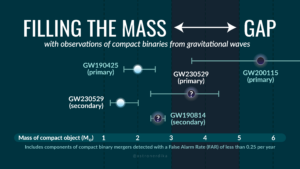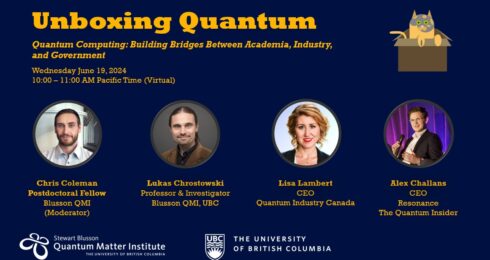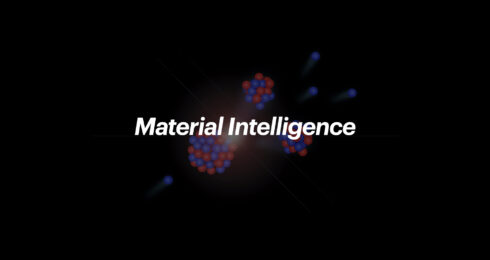An international collaboration of researchers including UBC scientists have observed gravitational waves from the collision of what is most likely a neutron star and an object likely to be a light black hole 650 million light-years from Earth.
The collision, reported in a preprint paper, was detected by one part of an international network of gravitational wave detectors, comprised of the Laser Interferometer Gravitational-Wave Observatory (LIGO), the Virgo Gravitational Wave Interferometer, and the Kamioka Gravitational Wave Detector (KAGRA).
“This detection, the first of our exciting results from the fourth LIGO-Virgo-KAGRA observing run, reveals that there may be a higher rate of similar collisions between neutron stars and low mass black holes than we previously thought,” says Dr. Jess McIver, assistant professor at UBC and deputy spokesperson of the LIGO scientific collaboration.
Neutron stars and black holes are both compact objects that are the dense remnants of massive stellar explosions. What makes this signal, called GW230529, intriguing is the mass of the object likely to be a black hole, which falls within a possible ‘mass gap’ between the heaviest known neutron stars but lighter than the lightest black holes in our galaxy.
Neutron stars, the mass gap, and black holes
Before the detection of gravitational waves in 2015, the masses of stellar-mass black holes were primarily found using x-ray observations while the masses of neutron stars were found using radio observations. The resulting measurements fell into two distinct ranges with a gap between them from about 2 to 5 times the mass of our Sun. Over the years, a small number of measurements have encroached on the mass gap, which remains highly debated among astrophysicists.

Image: Filling the mass gap with GW230529. This infographic compares the masses of the components of the gravitational-wave binary GW230529 with other gravitational-wave events that lie near the mass gap between neutron stars and black holes. [credit: S. Galaudage/Observatoire de la Côte d’Azur]
“While previous evidence for mass-gap objects has been reported both in gravitational and electromagnetic waves, this system is especially exciting because it’s the first gravitational-wave detection of a mass-gap object paired with a neutron star,” said Dr. Sylvia Biscoveanu, Einstein Fellow at Northwestern University and LIGO researcher. “The observation of this system has important implications for both theories of binary evolution and electromagnetic counterparts to compact-object mergers.”
Although the gravitational-wave signal does not provide enough information to determine with certainty whether these compact objects are neutron stars or black holes, it seems likely that the lighter object is a neutron star and the heavier object a black hole, as reported by the scientists.
“The finding shows us there’s a lot left to learn about these stellar remnants. With gravitational wave detectors, we’re just starting to scratch the surface of what’s out there, filling in the true population of these stellar bodies,” said Dr. McIver.
The signal was detected in May 2023 as part of the fourth observing run of the LIGO-Virgo-KAGRA network. Before the run started on May 24, 2023, the LIGO-Virgo-KAGRA researchers made improvements to the detectors, the cyberinfrastructure, and the analysis software that allowed them to detect signals from further away and extract more information about the extreme events in which the waves are generated.
Towards high throughput testing of mirror coatings for gravitational wave detectors
As part of UBC’s LIGO effort led by Dr. McIver, a team of Blusson QMI researchers are working towards improving the mirror coatings for future integration into the system.

Image: Photograph of a chip in a vacuum chamber at Blusson QMI.
“We’re now able to detect events like this thanks to various technological improvements, but we’re soon going to be approaching a fundamental limit where we won’t be able to sense further into space unless we can improve the materials that are used, particularly in the coatings on the mirrors in the LIGO detectors. The team at QMI is really well poised to play a vital role in pushing this technology forward,” said Dr. McIver.
“At UBC, we have the unique capability to make theoretical predictions of the kind of materials that might be the most promising, as well as material synthesis and characterization, all under one roof.
“That’s really special in terms of facilities around the world that are capable of advancing the material science knowledge needed to build better and better detectors.”
Blusson QMI Investigators Joerg Rottler, Jeff Young, and Ke Zou have combined their expertise in modeling, thin-film deposition, and characterization to enable a cycle of simulation, fabrication, and measurement of candidate thin-film materials that could improve the coatings.
“Our aim is to bring together diverse materials expertise at Blusson QMI to improve the sensors and help take gravitational wave detection to a whole new level. Our studies look to determine and optimize material components that will form the reflective mirrors in future instruments that promise to greatly expand the observational power of the gravitational wave community,” said Investigator Dr. Jeff Young.
“We’re bringing slightly different approaches to modelling, growing, and characterizing the mechanical properties of optical thin films, hoping to push beyond the limits of what is possible with current methods,” Young said. “We are excited by the potential for this new approach to accelerate the testing of a wide range of materials.”
Resuming the observing run
The fourth observing run will resume on April 10, 2024 with the LIGO Hanford, LIGO Livingston, and Virgo detectors operating together. The run will continue until February 2025 with no further planned breaks in observing. The sensitivity of the detectors should be slightly increased after the break.
While the observing run continues, LIGO-Virgo-KAGRA researchers are analyzing the data from the first half of the run and checking the remaining 80 significant signal candidates that have already been identified. By the end of the fourth observing run in February 2025, the total number of observed gravitational-wave signals should exceed 200.
Publications and documents
- Publication: Observation of Gravitational Waves from the Coalescence of a 2.5 – 4.5 Msun Compact Object and a Neutron Star (submitted). [pdf download from LIGO DCC]
- News Release.
- Science summary webpage [pdf flyer].
- Data release for GW230529 (Gravitational Wave Open Science Center/GWOSC).
- Known stellar mass black holes interactive graphic
- See the main ligo.org detection page for further resources.
Banner image credit: Carl Knox, OzGrav-Swinburne University.


